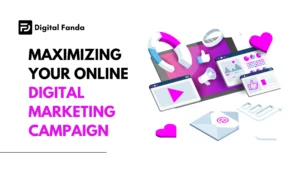
Google Ads unveiled Performance Max campaigns in November 2021, marking a significant shift from Smart Shopping campaigns. While these campaigns have proven immensely successful for e-commerce clients, lead generation (lead-gen) advertisers have faced challenges in replicating this success.
Performance Max campaigns adopt a full-funnel approach, leveraging signals from prior user interactions to distinguish converters from non-converters. This algorithmic process tailors ad delivery, including text ads, banner ads, and product listing ads, throughout the user’s conversion journey.
In contrast to e-commerce, where the algorithm easily distinguishes buyers and assesses revenue generation, lead-gen advertisers grapple with determining actual revenue. For instance, home service businesses may count “free estimate” form submissions as conversions, but discerning which submissions convert to revenue poses a challenge.
Phone calls introduce an additional layer of uncertainty. While most advertisers count phone call conversions based on a specific duration, not every call of that duration results in a scheduled appointment. Some calls below the set duration may lead to booked appointments.
Strategies for Quality Leads in Lead Gen Advertising
Performance Max campaigns face a susceptibility to spam for lead-gen advertisers. An unchecked algorithm might exploit easy sources, leading to a surge in traffic from spam sources. To combat this, Google recommends adding reCAPTCHA to website forms.
A more effective strategy involves linking Customer Relationship Management (CRM) systems to Google Ads and selectively importing conversion data only from qualified users. Some CRMs can provide exact revenue numbers for leads, allowing the algorithm to prioritize higher-revenue conversions.
Examples from clients illustrate successful strategies to enhance conversion data quality:
- Client A: Links their HubSpot account to Google Ads, importing only vetted form submissions, thereby forcing the algorithm to ignore any potential spam submissions.
- Client B: Implements a comprehensive conversion setup for each stage of their sales lifecycle within HubSpot (MQL, SQL, Contract, and Closed Deal), assigning values to each step. This slightly inflates ROAS but ensures appropriate valuation of every qualified lead.
For lead-gen advertisers seeking alternatives to CRM integration, innovative platforms like NexHealth for online bookings and CallRail or CallTrackingMetrics for call tracking offer effective solutions. NexHealth, for instance, allows medical advertisers to track online bookings as conversions by redirecting users to a confirmation page, ensuring genuine leads.
Platforms like CallRail and CallTrackingMetrics provide options to tag calls as qualified leads before importing them into Google Ads. Despite the potential time investment in listening to and qualifying calls, the benefits of identifying positive outcomes from Google Ads clicks outweigh the time spent.
The incorporation of AI technology in these platforms, capable of extracting keywords and phrases from conversations to identify converting calls, further enhances lead-gen advertising strategies.
In conclusion, while the value of Performance Max campaigns for lead-gen advertisers is undeniable, success hinges on the quality of conversion data. Investing effort in setup and adopting these strategies ensures that lead-gen campaigns reach their full potential with Performance Max, making the initial work worthwhile.
Read Also: Download Public Instagram Reels Directly: No More Third-Party Apps!
- 5 Must-Have Services to Skyrocket Your Web Presence
- Lead-Gen Advertising & Strategies for Acquiring Quality Leads
- WHAT YOU NEED TO KNOW ABOUT MAXIMIZING YOUR ONLINE DIGITAL MARKETING CAMPAIGN
- 1 Comment
- Advertising
- Strategies



Pingback:5 Key Strategies for Your 2024 Digital Marketing Journey